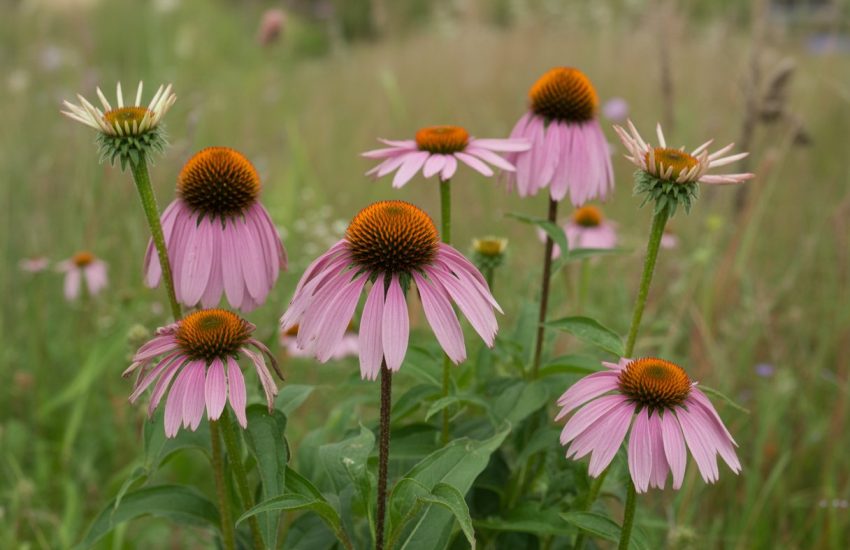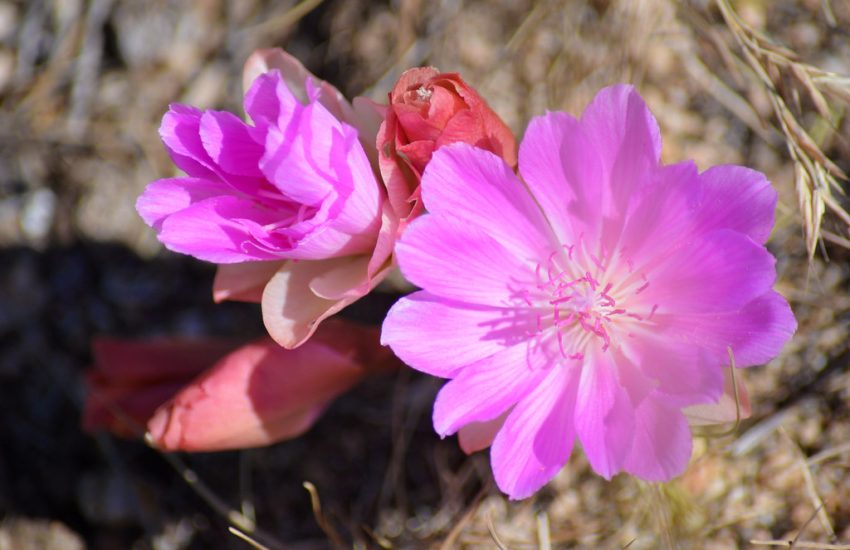Wildflower Meadow Planting Missouri Tips for Successful Growth and Maintenance
Planting a wildflower meadow in Missouri is a practical way to create a sustainable, low-maintenance landscape that supports local wildlife.
A successful wildflower meadow in Missouri starts with picking native species that fit the state’s climate and soil conditions.
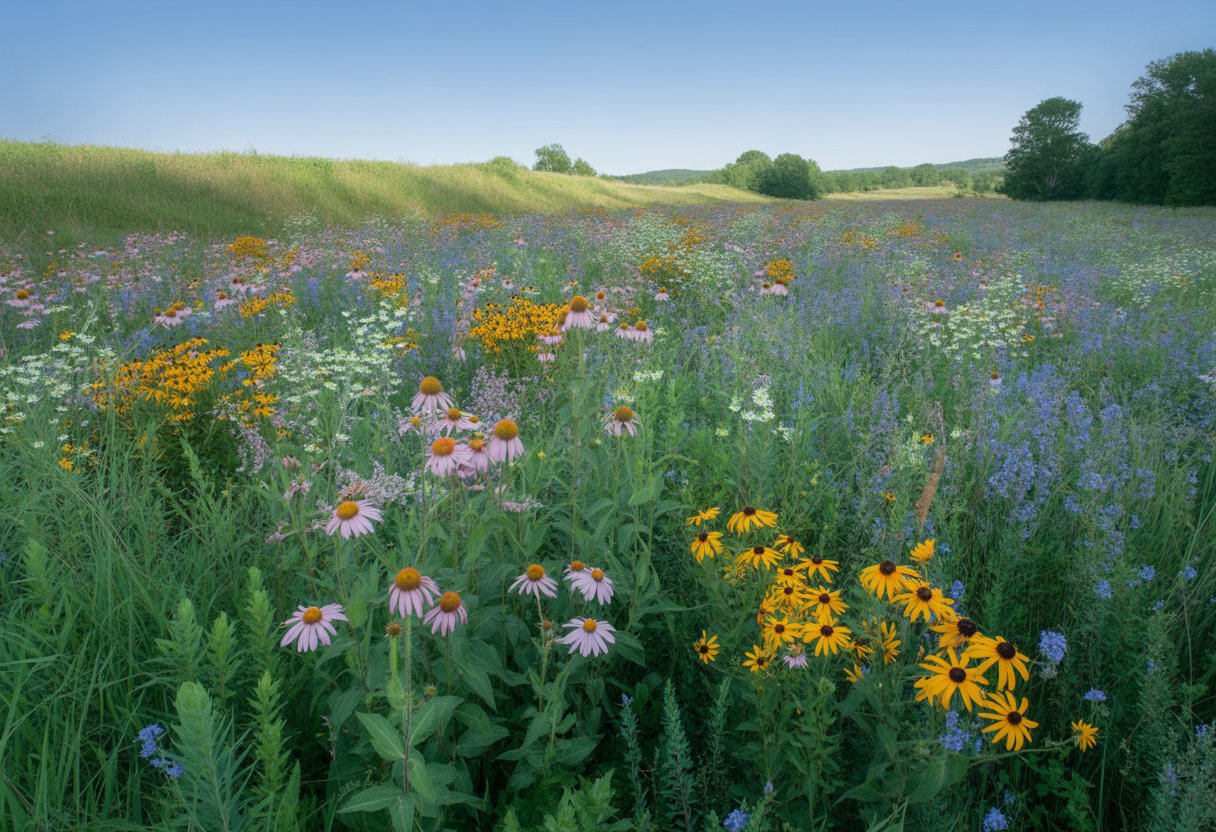
If you understand Missouri’s seasonal patterns and soil types, you’ll have a much easier time choosing a good mix of wildflowers that bloom all season.
When you add native grasses alongside wildflowers, the meadow gets tougher and usually needs less water and fertilizer.
Focusing on Missouri natives really boosts biodiversity, helps pollinators, and brings natural beauty—without a ton of work.
It’s a smart approach for gardeners or landowners who want a meadow that fits their spot and their goals.
Planning a Wildflower Meadow in Missouri
You’ll want to start by choosing native species, sizing up your site, and picking a location that makes sense.
A little planning upfront goes a long way toward healthy growth and a landscape that actually supports wildlife.
Choosing Native Wildflowers for Missouri
Go for wildflowers that know Missouri’s climate and soil.
Echinacea purpurea (purple coneflower), Rudbeckia hirta (black-eyed Susan), and Aster varieties all thrive here.
These plants pull in pollinators and don’t need as much fuss as non-native options.
Toss in some sedges like Carex spp. for extra texture and a bit of soil stability.
Skip non-native mixes—they often sneak in invasive species that push out the good stuff.
If you stick with Missouri’s prairie natives, your meadow will stay healthier for years.
Evaluating Site Conditions and Full Sun Requirements
Wildflower meadows here really need 6-8 hours of full sun each day.
Shady or wooded spots just don’t cut it—they’ll stunt blooms and weaken plants.
Pick soil with decent drainage.
Heavy clay or soggy ground makes it tough for wildflowers to survive.
Test your soil pH to match wildflowers that like slightly acidic to neutral soils (pH 6.0–7.0).
Clear out lawn or weeds before planting to give wildflowers a fighting chance.
Selecting the Best Location and Layout
Look for open, flat, or gently sloped land that gets lots of sun.
Avoid low spots that collect water.
You can go big or small, but larger meadows usually support more wildflower and wildlife diversity.
Think about pathways for easy maintenance and a place to admire the view.
Group plants by height and bloom time for more visual punch.
Buffer zones around the edge help keep out invasives and give wildlife a little extra room.
Preparing and Planting the Meadow
Take your time with site prep, pick the right planting time, and stay on top of early growth.
Each step matters for seed germination and long-term success.
Soil Preparation Techniques
Start by clearing out old vegetation and debris.
Use a tiller or, if you have to, a bit of herbicide to knock down weeds.
Loosen the soil about 4-6 inches deep so roots can stretch and water drains better.
Do a soil test to check pH and nutrients.
Most wildflowers like it slightly acidic to neutral (pH 6.0-7.0).
If you need to, add lime or organic matter.
Go easy on fertilizer—wildflowers actually do better with less.
After tilling, firm the soil a bit so seeds don’t drop too deep.
When and How to Plant Wildflower Seeds
In Missouri, plant wildflower seeds in early spring (March to April) or late fall (October to November).
Spring planting lets seedlings get established before summer heat.
Fall planting uses natural cold to help seeds germinate.
Mix seeds with sand for even spreading.
A seed spreader helps keep things uniform—usually 5 to 10 pounds per 1,000 square feet, depending on your mix.
After spreading, rake lightly so seeds are just under the surface—no more than 1/8 inch deep.
Don’t bury them; they won’t come up.
Roll or press the soil to help seeds touch soil and hold moisture.
Establishing Strong Growth in the First Season
Keep the soil moist while seeds are sprouting and seedlings are tiny.
Water lightly and regularly, but don’t flood it.
Weeds will show up—pull them by hand or spot-treat with a safe herbicide.
Mow high (8-10 inches) if weeds get pushy, but don’t scalp your wildflowers.
Some wildflowers take their sweet time to show up.
If seedlings build strong roots in year one, they’ll be tougher for years to come.
Check in often and tweak watering or weeding as needed.
Caring for and Enjoying Your Wildflower Meadow
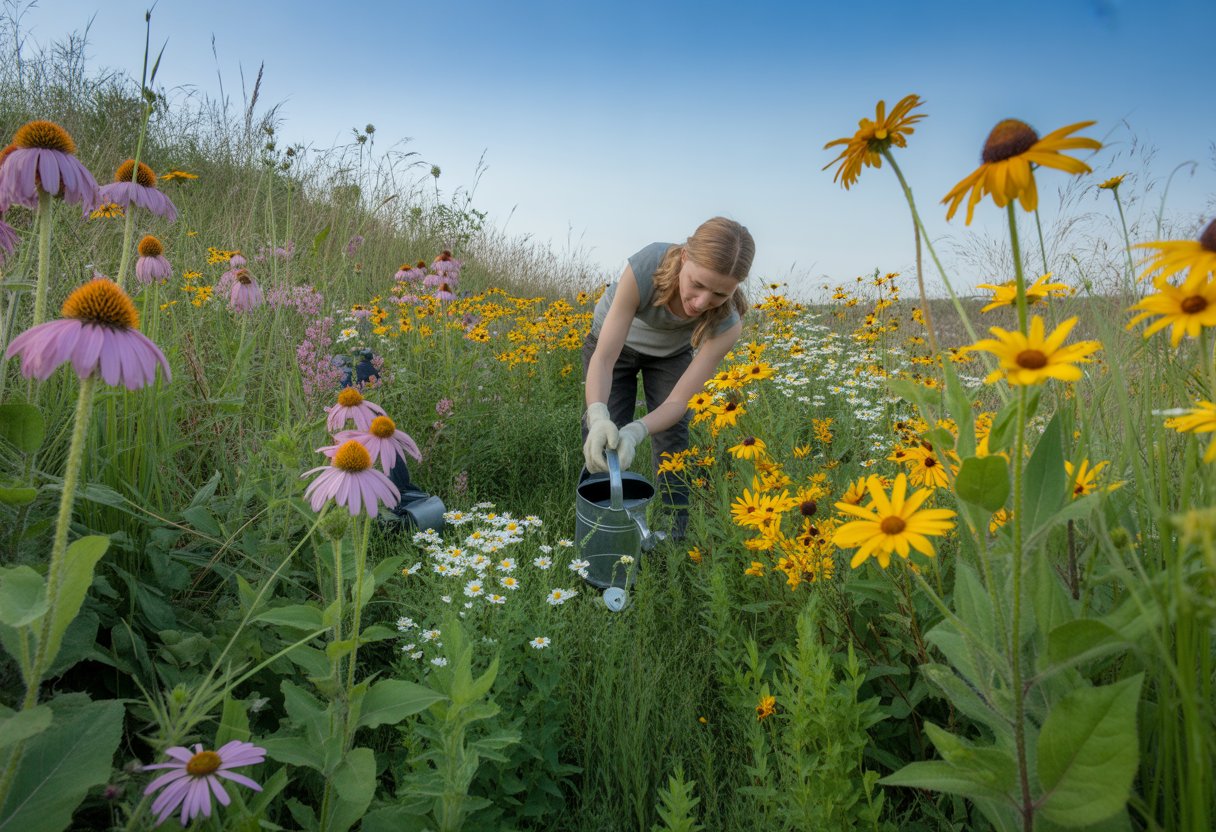
A wildflower meadow needs a bit of care to keep thriving.
Water, weed, and do some seasonal upkeep to keep plants happy.
If you fill your patch with native plants, you’ll pull in pollinators and songbirds, too.
Watering, Weeding, and Maintenance Tips
Once established, Missouri wildflower meadows usually don’t need much watering.
During the first season, water seeds or plugs deeply once or twice a week if it’s dry.
Overwatering just brings weeds and shallow roots.
Weed early and often.
Get rid of invasives and aggressive grasses before they take over.
Hand-pull or use gentle tools, but don’t yank up wildflower roots.
Mow once a year in late fall or early spring to keep woody plants out.
Leave leaf litter and dead flower stalks through winter—they make great mulch and protect seeds.
Skip heavy fertilizer; it helps grasses more than wildflowers.
Attracting Pollinators, Bees, and Songbirds
Diversity and staggered blooms keep food sources coming for bees and butterflies.
Native picks like purple coneflower, black-eyed Susan, and milkweed work wonders for local insects.
If you can, put the meadow near water or set up shallow birdbaths for songbirds.
Skip pesticides to keep things safe.
Add nesting boxes, brush piles, or logs to invite birds and helpful bugs.
When wildflowers and wildlife interact, you get a real boost in biodiversity.
The meadow turns into a resource for Missouri’s ecosystems, offering natural forage and shelter.
Regional Considerations and Inspirations
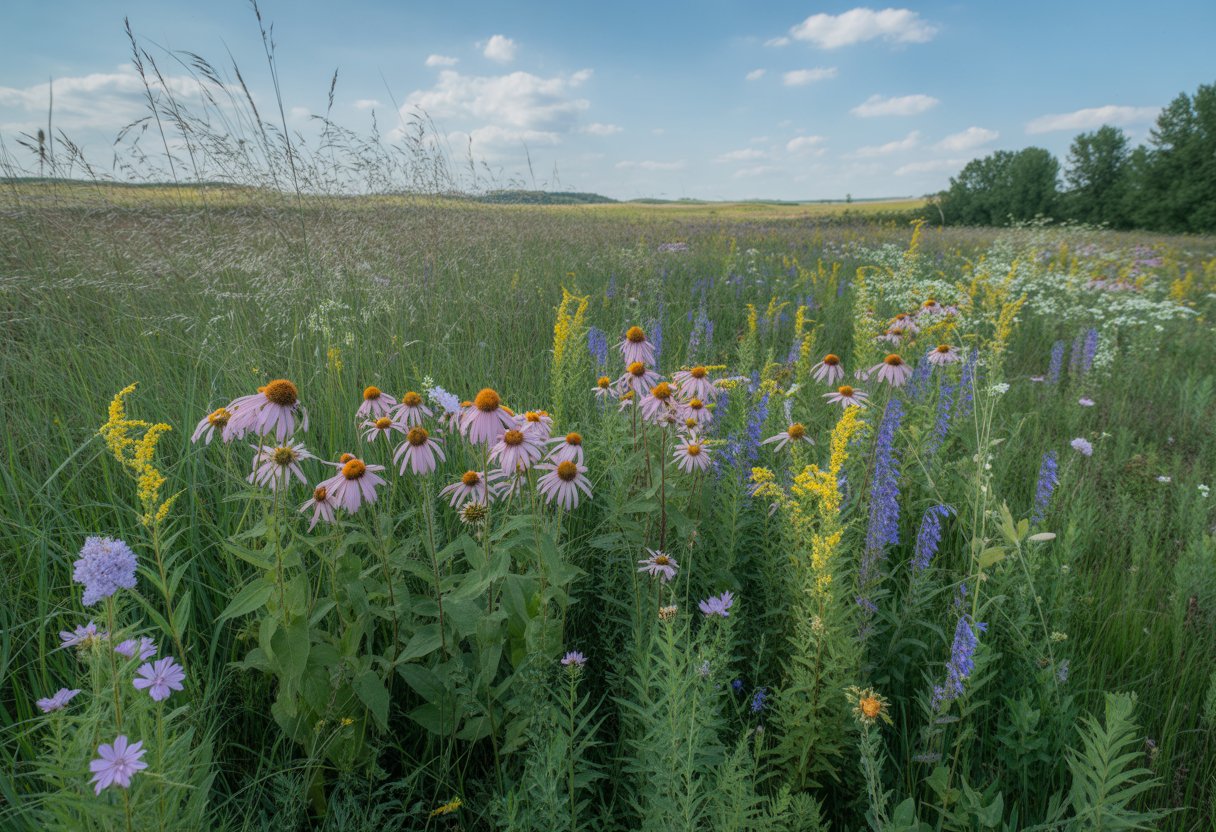
Wildflower meadows look different depending on region, soil, and native plants.
Knowing what’s happening in neighboring states—and how Missouri stands out—can spark ideas for your own meadow.
Wildflower Meadows in Neighboring States
Arkansas, Kansas, Indiana, and Ohio share some native species with Missouri, but each state has its quirks.
Arkansas runs warmer, so heat-tolerant species like Black-eyed Susan and Purple Coneflower do well there.
Kansas, with its prairie roots, leans heavily on grasses and drought-tough wildflowers.
Indiana and Ohio are cooler and wetter, so you’ll see more Wild Blue Phlox and Goldenrod.
They push for more diversity to help pollinators, especially in suburban and rural spots.
Soil varies, too—Indiana and Ohio usually have heavier clay, while Missouri’s looser loams drain better.
That difference really changes how you prep and plant.
Comparing Missouri to Other Regions
Missouri sits in a transition zone. It blends northern and southern wildflowers, which gives gardeners a pretty broad palette for meadow planting.
Unlike Florida or Texas, Missouri deals with cold winters. So, you really need cold-hardy perennials here.
Compared to Minnesota and New York, Missouri enjoys a longer growing season. The winters aren’t quite as extreme, either.
Western regions like California and Arizona? Their arid climates call for drought-resistant species like California Poppy or Desert Marigold. Those just don’t thrive in Missouri.
Canadian meadows usually stick with very hardy species for their harsh winters. Missouri’s approach feels a lot more temperate by comparison.

